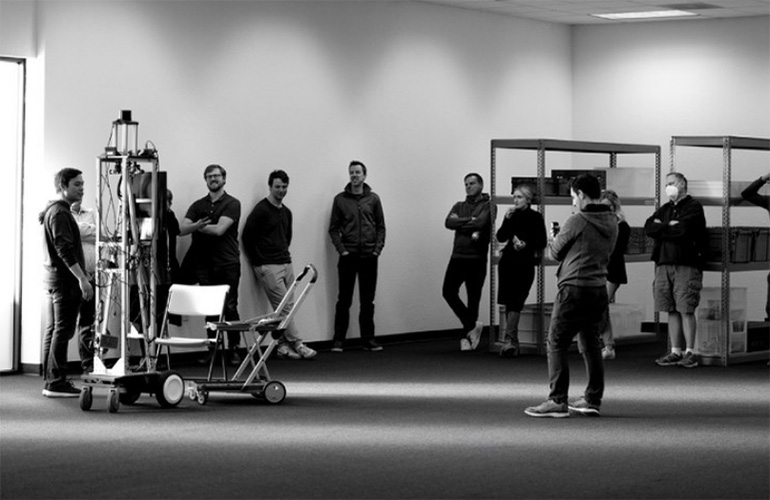Collaborative Robotics raises $30M in Series A funding

The Collaborative Robotics development team is working on a new generation of collaborative robotics. | Credit: Collaborative Robots Instagram feed
Collaborative Robotics announced it has raised $30M in Series A funding led by new anchor investor, Sequoia Capital, bringing the total amount raised since founding to over $40M. The funds will enable Collaborative Robotics to begin the process of scaling early field deployments and manufacturing their novel cobot.
The company is intentionally vague about exactly what that novel cobot is. So I reached out to company founder Brad Porter to try to tease more detail about the product and the roadmap. There isn’t a single image of a robot on the company website, but there are hints as to the workflows that the company is attacking.
The company was founded in 2022 by Brad Porter, former VP of Amazon Robotics, to redefine the future of human-robot interaction. Porter brings a wealth of knowledge and experience to the role, leading to the assumption that the company would invest in building autonomous mobile robots.
Porter has assembled an experienced development and management team, most significantly Jon Battles, who is the VP of Technical Strategy. Battles brings two decades of experience at Amazon integrating Kiva robotics and working in the Amazon Robotics group.
Although the company name might invoke images of collaborative manipulators over industrial robots, according to Porter, the company is redefining and broadening the category of collaborative robotics.
In Porter’s view, robotics in the factory and warehouse function around trained professionals. Moving robotics out of the factory and warehouse, out from behind safety fences, and into interactions with the public requires a paradigm shift in functionality and safety.
Porter said, “We want to bring robots out of the fenced-in warehouses into warehousing logistics. But we also look at commercial spaces where there’s a fair bit of material movement, you know, stadiums, airports, hospitals, manufacturing facilities.”
When asked how the company plans to differentiate its solution from the existing set of autonomous mobile robot vendors he said, “We’re building with all fundamental capabilities that are [at] high-tech readiness levels already. I think the place where we’re pushing the envelope, there are obviously other interesting robotics demos, but I think it’s in the ability to communicate with these robots in a very natural way. Using large language models, I think opens up yet another level of collaboration, another level of trustworthiness, another level of capability.”
Porter is also a bit skeptical of the practical feasibility of bipedal humanoid robots. He thinks there are uses for collaborative robots that require them to work naturally alongside humans, but not necessarily in human form.
The company is still guarding the exact configuration of its first product, this is the reason why there are no images of robots on the website yet. However, Porter hinted that the robot is ready to deploy into several pilot projects and that a product release is likely within the next year. Mayo Clinic is one of the pilot customers named by the company, but no details on what the robot will be doing have been released.
“Our vision for a future where robots seamlessly integrate into our surroundings to enhance operational efficiency and human potential is now closer than ever,” said Porter. “This funding will accelerate our mission to bring the world’s first truly practical cobots to market.”
Sequoia Capital led the funding round with Alfred Lin joining the board. Other contributors include Khosla Ventures and Mayo Clinic, with CalibrateVentures, Neo Ventures, and 1984.vc further expanding their existing investments. Jeff Wilke, former CEO of Amazon Consumer, Fuel Capital, and MVP Ventures also added to the funding pool.
Alongside Collaborative Robotics’ development of their cobot, the team launched the Cobot Flywheel Program to help the world’s most innovative companies in biotech, healthcare, and logistics drive ambitious operational transformation with advanced robotics solutions. As part of its collaboration with Collaborative Robotics, Mayo Clinic has adopted the Cobot Flywheel Program to accelerate robotics initiatives.
The post Collaborative Robotics raises $30M in Series A funding appeared first on The Robot Report.
from The Robot Report - Robotics News, Analysis & Research https://ift.tt/fPiYJvp
via artificialconference
Comments
Post a Comment